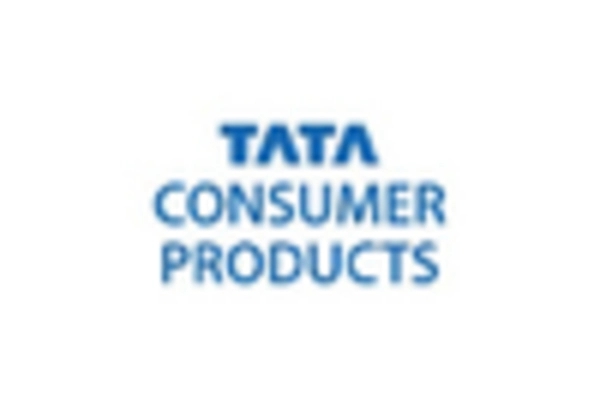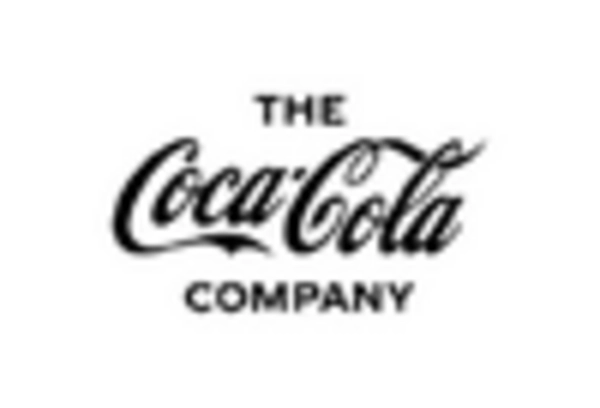Growth of the Herbal Tea Segment
The Green Tea Leaf Market is experiencing a notable expansion due to the growth of the herbal tea segment. As consumers increasingly seek alternatives to traditional beverages, herbal teas, including those made from green tea leaves, are gaining popularity. This segment is projected to grow at a compound annual growth rate of approximately 6% over the next few years. The rising trend of herbal tea consumption is driven by the perception of these beverages as healthier options, often associated with relaxation and wellness. Consequently, the demand for green tea leaves, which serve as a base for many herbal blends, is likely to increase. This growth in the herbal tea segment not only diversifies the offerings within the Green Tea Leaf Market but also attracts a broader audience, enhancing overall market dynamics.
Increased Awareness of Health Benefits
The Green Tea Leaf Market is significantly influenced by the heightened awareness of the health benefits associated with green tea consumption. Research indicates that green tea is linked to various health advantages, including improved metabolism, enhanced brain function, and reduced risk of chronic diseases. As consumers become more informed about these benefits, the demand for green tea leaves is expected to increase. Market data suggests that The Green Tea Leaf is anticipated to grow at a compound annual growth rate of around 5% over the next few years. This growing awareness not only drives sales but also encourages producers to invest in high-quality green tea leaves, thereby enhancing the overall quality and appeal of products within the Green Tea Leaf Market.
Rising Demand for Functional Beverages
The Green Tea Leaf Market is experiencing a notable surge in demand for functional beverages, driven by consumers' increasing preference for health-oriented products. This trend is reflected in the growing popularity of green tea as a natural source of antioxidants and other beneficial compounds. According to recent data, the functional beverage market is projected to reach a valuation of approximately 200 billion dollars by 2026, with green tea playing a pivotal role in this growth. As consumers become more health-conscious, the demand for green tea leaves, which are integral to the production of these beverages, is likely to rise. This shift towards functional beverages not only enhances the market potential for green tea leaves but also encourages innovation in product formulations, thereby expanding the overall Green Tea Leaf Market.
Expansion of Organic and Natural Products
The Green Tea Leaf Market is witnessing a significant shift towards organic and natural products, as consumers increasingly prioritize sustainability and health. The organic segment of the green tea market has been expanding rapidly, with sales of organic green tea projected to grow at a rate of 8% annually. This trend is indicative of a broader movement towards clean-label products, where consumers seek transparency in sourcing and production methods. As a result, producers are focusing on cultivating organic green tea leaves, which not only meet consumer demand but also align with environmental sustainability goals. This expansion of organic offerings within the Green Tea Leaf Market is likely to attract a more diverse consumer base, further driving market growth.
Technological Advancements in Cultivation and Processing
The Green Tea Leaf Market is benefiting from technological advancements in cultivation and processing techniques. Innovations such as precision agriculture and advanced processing methods are enhancing the quality and yield of green tea leaves. These technologies enable farmers to optimize growing conditions and reduce waste, leading to more efficient production. Market analysis indicates that the adoption of such technologies could potentially increase the overall yield of green tea by up to 20%. As producers leverage these advancements, the quality of green tea leaves improves, which in turn enhances the marketability of products within the Green Tea Leaf Market. This focus on technology not only boosts productivity but also supports sustainability efforts in tea cultivation.


















Leave a Comment